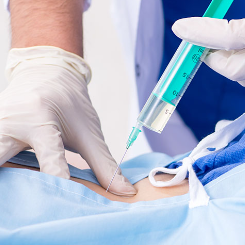Regenerative medicine uses your body’s cells to heal injured tissues, help you avoid surgery, or shorten your downtime after surgery. The regenerative medicine specialists at Restore Health offer treatments with platelet-rich plasma (PRP), which provide long-lasting pain relief by healing the source of your pain. To learn if regenerative medicine can help relieve your pain, book an appointment online or call the office in Spokane or Richland, Washington, today.

Regenerative Medicine FAQs
PRP can accelerate healing for nearly any type of injury or degenerative disease.
The team at Restore Health may recommend regenerative medicine for conditions such as:
- Arthritis
- Tendonitis
- Neuropathy
- Tennis and golfer’s elbow
- Rotator cuff injuries
- Plantar fasciitis
- Achilles tendonitis and tears
- Knee ligament injuries
- Spinal stenosis
- Facet joint syndrome
- Sprains and strains
Regenerative medicine can treat most conditions that cause back pain, neck pain, shoulder pain, and knee pain, often providing relief within a few weeks after your treatment. It can also be an effective treatment for sciatica.
To learn how regenerative medicine can relieve your pain, call Restore Health, or book an appointment online today.
As natural components of your blood, platelets have two jobs to perform: they promote blood clotting to stop bleeding and accelerate healing.
When tissues in your body are injured, platelets naturally travel to the area and release growth factors. Then the growth factors:
- Activate the healing process
- Regulate inflammation
- Recruit stem cells to the area
- Support new cell growth
- Stimulate new blood vessel growth
- Prevent degeneration in healthy tissues
Your Restore Health provider makes your platelet-rich plasma or PRP treatment in the office by drawing a sample of your blood and processing it to separate the platelets from the other blood cells.
Then your provider draws the platelets and a small amount of plasma (the liquid part of your blood) into a syringe and injects the concentrated platelets, using real-time imaging to inject them into the injured tissues.
